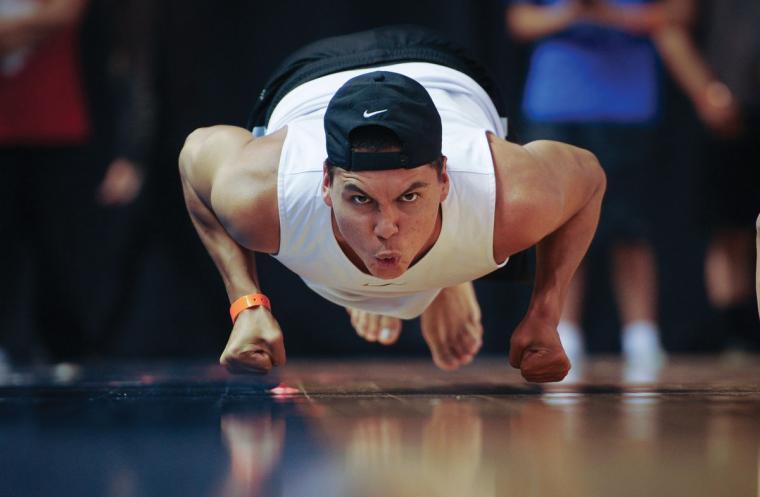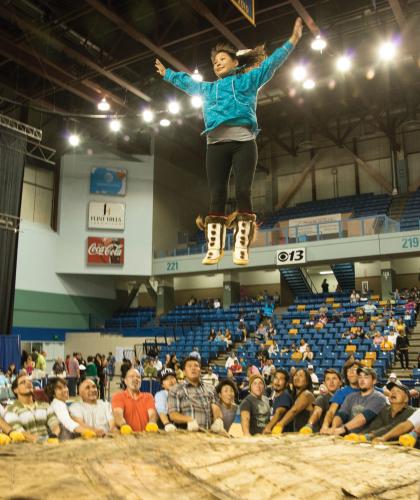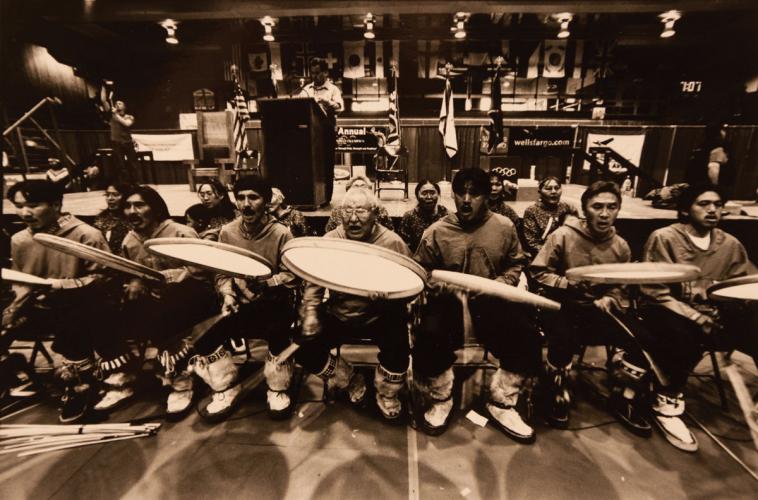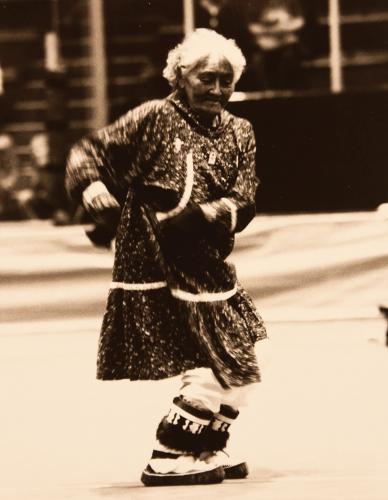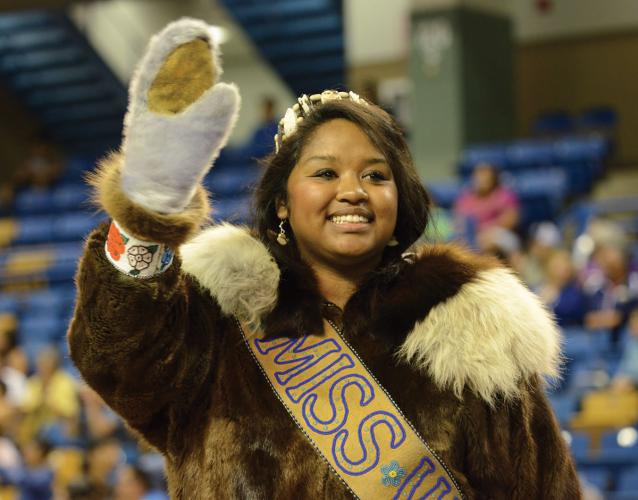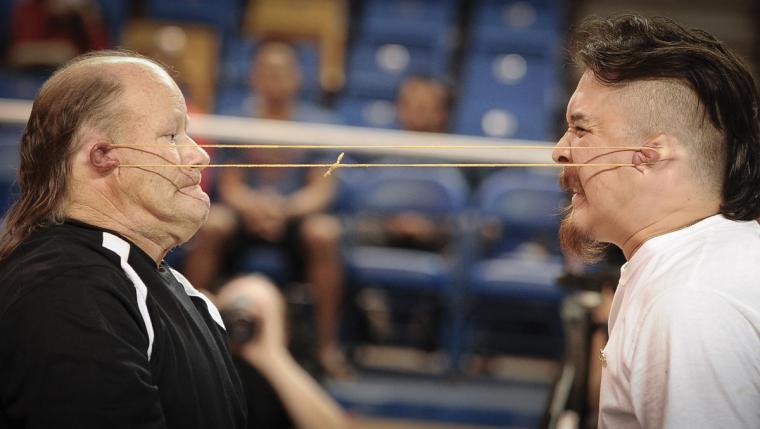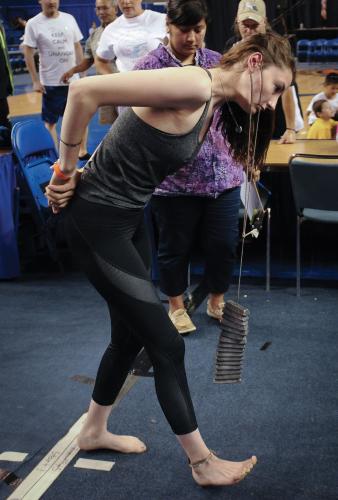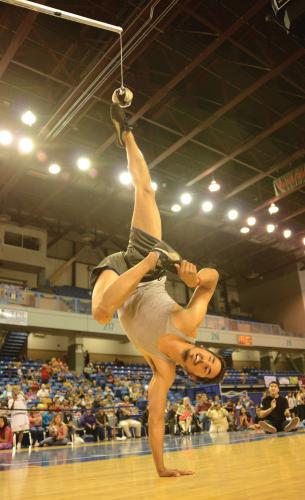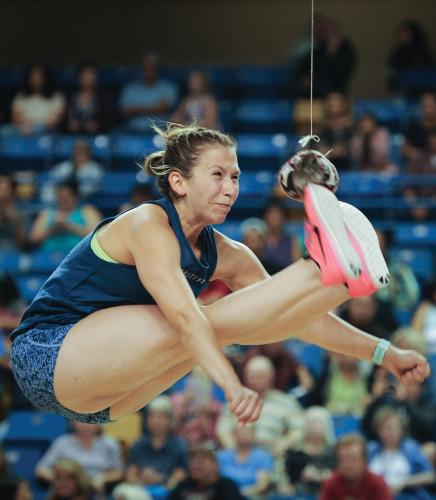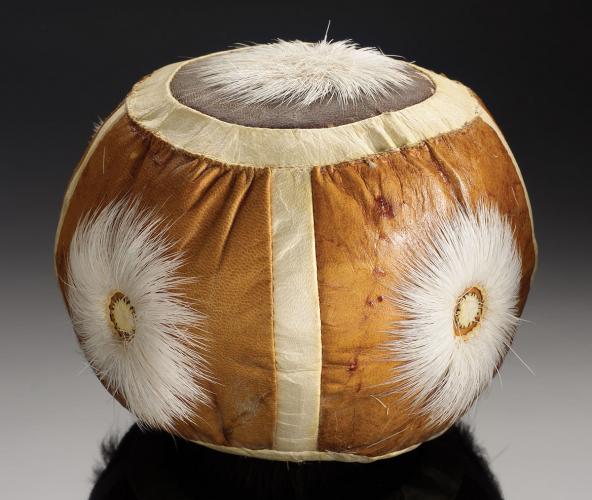If you miss the Olympic Games in Tokyo, Japan, sport enthusiasts will still have the opportunity to witness one of the most unique athletic events in the world this summer. Instead of typical Olympic sports such as gymnastics or the pole vault, you could be watching athletes perform such feats as hopping on their knuckles, carrying weights with their ears and kicking a ball that is dangling many feet in the air.
This year marks the 60th anniversary of the World Eskimo-Indian Olympics (WEIO), to be held July 21 to 24 in Fairbanks, Alaska. With the exception of 2020, when the event was cancelled due to the COVID pandemic, WEIO has been held annually the third week of July since 1961. Traditionally, such games were intended to strengthen and preserve the survival skills of Alaska Native people. Today, this congenial, four-day competition celebrates the perseverance and collaborative spirit of Indigenous inhabitants of the world’s circumpolar regions.
“We liken it to a big homecoming or big family reunion,” says WEIO President Gina Kalloch. The games are open to anyone who wishes to attend, and Indigenous peoples throughout the Americas and far North participate, including Russia, Norway and Greenland.
Games of Polar Prowess
For centuries, Alaska villages have hosted competitions for young men to prove their strength, agility and pain tolerance—skills needed to hunt and survive in harsh polar environments. These games would be part of friendly gatherings full of dance, music and food.
As more non-Native people came to Alaska, however, some of its original inhabitants worried traditional games might be forgotten. The late A. E. “Bud” Hagberg and Frank Whaley, Wien Airways employees, organized the first World Eskimo Olympics and continued to co-chair it for a few years. That first year, four Eskimo and two Indian dance groups participated along with competitors in the high kick, blanket toss and seal-skinning competitions. It also included a Miss Eskimo Olympics Queen contest.
From 1961 to 1969, the City of Fairbanks, through the Fairbanks Chamber of Commerce, sponsored the World Eskimo Olympics as part of its Golden Days Celebration. In 1970, the Tundra Times, Alaska’s Native newspaper at that time, took over sponsorship and in 1973 changed the name of the event to the World Eskimo-Indian Olympics to more accurately reflect that Indigenous people from across the circumpolar region participated. During this time, the event began to include athletic competitions for women. In 1976, WEIO formed an independent nonprofit corporation that still runs the annual event.
Kalloch, who has been involved with the games since the 1980s, says that some people have questioned the event’s name still including the term “Eskimo,” which was used to describe Inuit and Yup’ik people. Some linguists have said that “Eskimo” is derived from a Montagnais (Innu) word “ayas˘kimew” meaning “netter of snowshoes.” However, since colonists imposed the name on the Alaska Native people, many consider the term derogatory. Kalloch says although many elders still self-identify as Eskimo, younger Alaska Natives are preferring to return to using the names from their Native languages.
Regardless of this debate, Kalloch says the event is about collaboration among Native people, especially in Alaska. “It is such a harsh environment, and a hard place to survive back in the day. Community and cooperation is very, very important,” she says, even among the athletes. “That is the way these games are played.”
In addition to games, multigenerational dance and song performances are still held and a Miss WEIO is chosen as the best representative of her community. Faith Peters (Athabascan) is one of the organizers of the Tanana Dancers, a traditional group of more than a hundred dancers. She says for them, the event is all about honoring not only WEIO’s “queen” but the elders and other family members in attendance as well as preserving Alaska Native heritage. “We have 32 Koyukon Athabascan written songs,” says Peters.” We teach that if you have and know this many songs, your culture will never die.”
Remarkable Feats
Just as in the other World Olympics, in WEIO’s more than 20 strenuous events, men still compete against men and women against women for gold, silver and bronze medals. Each event still has ties to the traditional skills from which it originated.
Chris Anderson (Inupiaq), who has attended WEIO since the 1960s and who now serves as its emcee, says he enjoys the blanket toss event, known as “Nalukataq.” This is a celebratory activity, during which individuals standing on a large walrus or bearded seal-skin blanket held by dozens of people are thrown into the air. Anderson lightheartedly speculated that perhaps Alaska Natives used the event to look for whales.
All that energy from dozens of people can produce impressive results. “You have to let the blanket do all the work. You have to land and hit the rhythm. If you get a good balanced blanket, you go straight up,” he says. “There have been times where people have had to duck or put their elbow up to shield their face from hanging lights on the ceiling!”
Another notable event is the knuckle hop, also known as the seal hop, during which the athlete hops only on his or her knuckles and toes as if a hunter was emulating the movements of a seal. The distance is then measured and recorded.
According to WEIO, the ear weight event, during which a person carries weights tied to a string over one’s ear, and the ear pull event, during which two people place a string on their ears and pull with all of their force to see who can take the most discomfort, arise from how much pain a person could tolerate in relation to the sting of frostbite. Originally, a single piece of sinew, which could have a sharp edge, was used, but later this became braided.
Austin Sumdum (Tlingit) says he travels from his home in Juneau to participate in several WEIO events because he enjoys the challenge. But the events are not without risk of injury. One ear pull event caused him to need medical attention. “It was beginning to slide off, and the inner dark guy inside me was like, ‘no, keep going.’ As it was getting ready to come off, it just latched onto a part of my ear,” he says. “I just went with the momentum.” Sumdum received seven stitches to close a serious cut to the inside of his ear.
Of the many different events in which Sumdum has participated, he says he truly enjoys the kneel jump, during which an athlete sits in a kneeling position, feet facing up toward the ceiling, and thrusts into a standing position. The distance the athlete jumps from the ground is then measured. Sumdum says this event originates from the need to move quickly if a person was ever kneeling on frozen ice that began to break. “People up north in Alaska, like in Barrow or in that region, they’d have to think super quickly when it came to the ice,” he says. “It just happens really fast. I’ve never experienced it myself, but that’s what I’ve always been told.”
The Indian stick pull and the Eskimo stick pull are two similar events during which two people sit facing each other and pull either a greased stick (the Indian stick pull) or a larger stick that is not greased (the Eskimo stick pull). The Indian stick pull is supposed to simulate pulling a slippery fish out of the water and the Eskimo stick pull is a simulation of pulling a seal through the ice.
Several events involve an athlete trying to touch a ball hanging from a stand several feet from the floor either by jumping up to kick it with one foot or two or with one hand. Bernard Clark (Athabascan) is a prominent force, specializing in the one-hand reach. During this event, an athlete must touch the ball with one hand—but not while standing. “So you’re sitting on the floor and you have both your hands on the floor. From there, you hoist your body off the ground on just your hands. With one hand you balance on one hand and your dominant hand goes up and touches the ball.”
Clark is the world record holder in the event. From a single hand stand, he has touched a ball 5 feet 10 inches from the ground, just 4 inches shorter than Clark himself.
Other events include: the four-man carry, during which one person carries four individuals draped over the athlete’s body to test tolerance for carrying heavy loads; drop the bomb, during which a person stretches out like an airplane and held by volunteers, holds the form as long as he or she can; and the toe kick, during which the athlete stands with his or her toes at a starting line and jumps forward to kick a stick backward, with feet parallel, to try to land the furthest distance from the sticks’ starting mark.
True Sportsmanship
Kalloch says although the games are competitive, WEIO has a great spirit of community and camaraderie. During competition, opponents often offer tips to each other in the midst of the events.
“When we say competition here, it means a very different thing than what it does in other communities,” says Kalloch. “These guys and these ladies, they’re competing mostly with themselves. So when you’re there and you’re watching the game, people are always like, ‘What the heck?’ Because the people who are competing against each other are actually coaching each other and helping each other, and giving each other advice throughout the competition.”
WEIO presents four special recognition awards every year. While the Howard Rock Memorial Outstanding Athlete Award is given to the best all-around athlete based on highest number of points, the others go to those on personal merit. They include the A. E. “Bud” Hagberg Memorial Sportsmanship Athletic Award, the recipient of which is chosen by his or her fellow athletes; the Frank Whaley Award for Outstanding Contributions given to an individual or company that has given considerable time, money and effort toward the events; and the Olive Anderson Volunteer Award.
Bernard Clark says that as an Athabascan man, seeing the athletes support each other is inspiring: “When you try to fuel on your other competitors, you feel enlightenment. There are so many feelings to it. That enlightenment is just the beginning. There’s a lot of happiness in doing things right for the games. That just really warms your heart. I’ve got to say, there’s nothing like it.”
Watch WEIO events live at facebook.com/weioak and facebook.com/explorefairbanks.

